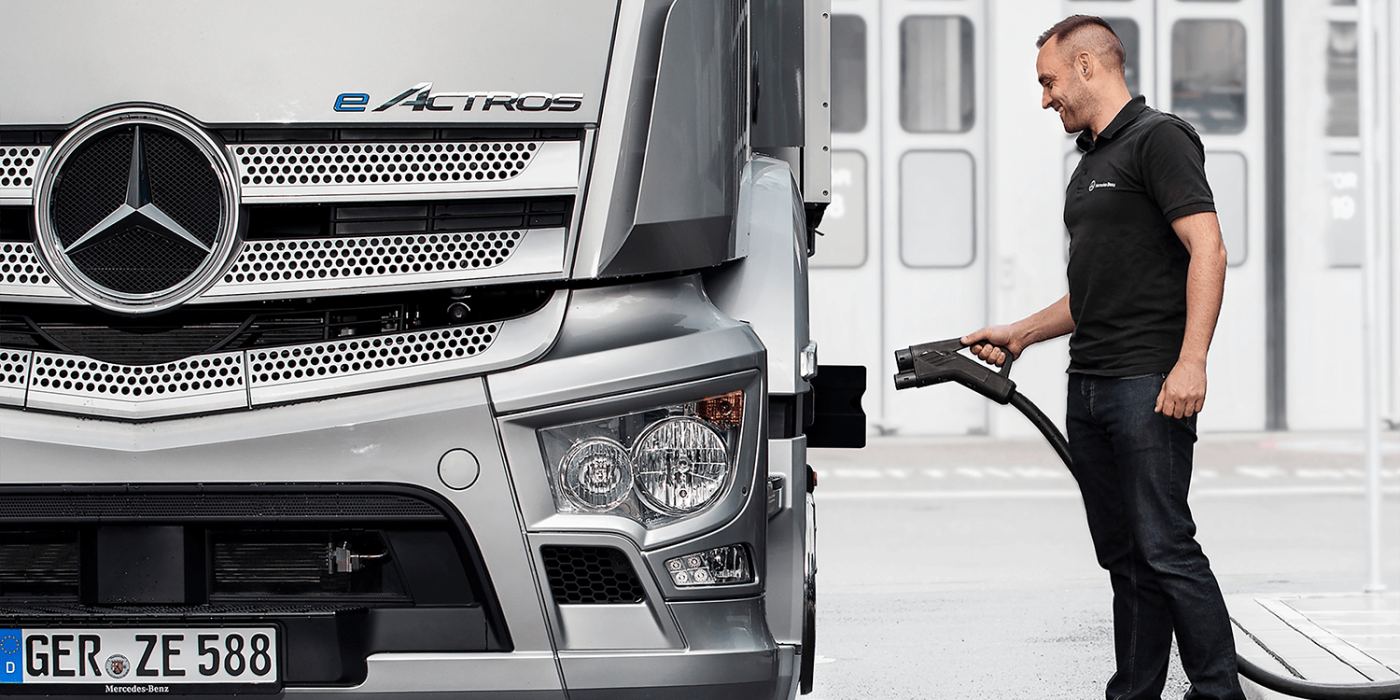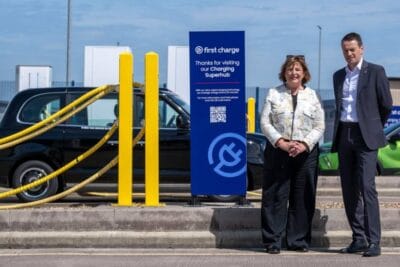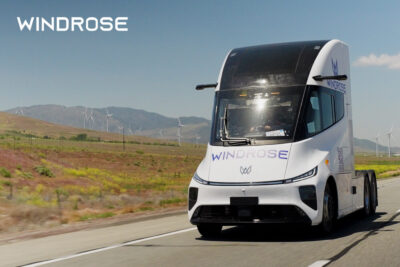Commercial Vehicle Charging Europe now called Milence
Commercial Vehicle Charging Europe, the joint venture founded by Daimler Truck, the Traton Group and the Volvo Group to build a high-performance charging network for heavy trucks and coaches in Europe, has now started its business activities under the brand name Milence.
When the joint venture was founded, Commercial Vehicle Charging Europe (or the short form CV Charging Europe) was only a working title. The joint venture’s name has already changed to Milence on public platforms and social media sites.
With an initial funding of half a billion euros, Milence says it is putting its initial focus on the expansion of the charging infrastructure in Germany, the Netherlands, France, Belgium, Spain, Italy, Norway as well as Sweden. The 500 million euros should enable Milence to rapidly expand its electric truck charging network.
Milence wants to enable the rapid expansion of the truck charging infrastructure to enable zero-emission heavy-duty transport in Europe. The battery of the coming electric trucks with a range of more than 400 kilometres must be able to be fully charged during the legally prescribed 45-minute break of the professional driver. “There’s no time to waste, and we must start ahead of the market with the rollout of at least 1,700 charging points in the next five years,” explains Milence CEO Anja van Niersen.
The 1,700 charging points will be distributed between the current CCS charging standard and the upcoming megawatt charging with the standard called MCS. With CCS charging stations, the battery of a heavy-duty truck can be charged within less than 90 minutes. With the MCS, the battery of a 40-tonne truck will be able to be charged within 30-45 minutes – i.e. during the legally required break time. The MCS will be supported by both the upcoming Mercedes eActros LongHaul and MAN’s heavy-duty electric truck.
Even though Daimler Truck and the Volvo Group are also working on fuel cell trucks and the two automotive giants also want to build the fuel cells together in the joint venture Cellcentric, they also see that there will also be a place for battery trucks on long-haul routes.
Milence says it will also use on-site batteries at charging stations to enable trucks to utilise stored green energy and to decrease peak energy demand. Milence intends to use on-site batteries to reduce electrical grid congestion and balance the demand. The charging infrastructure company says this offers a pragmatic solution for the current grid congestion in many countries.
It has already become clear in the recent discussions around the proposal for the Euro 7 standard or at the specialist conference “Climate-friendly commercial vehicles” from the German Federal Ministry of Transport that the public charging infrastructure is one of the most important levers for integrating electric trucks into the operators’ existing logistics processes.
But freight transport on the motorways not only lacks charging stations but also parking spaces. “Everyone who covers distances on European motorways notices this,” says van Niersen. “In addition, there is a shortage of almost half a million professional drivers and 40,000 truck parking spaces. There’s still a lot of room for improvement in road freight transport.”
Milence says it is making sure that the charging stations will be safe and secure, as well as offering infrastructure that meets the needs of professional drivers. This truck charging joint venture understands that this also includes sanitation, catering, recreational facilities and a high level of security.
“With favourable EU regulations, lower costs of ownership, improved working conditions for truck drivers, and the rollout of a Europe-wide megawatt charging network, we expect battery-electric trucking to transform the road transport industry in the coming years,” says van Niersen.





0 Comments